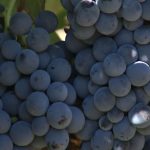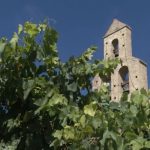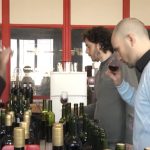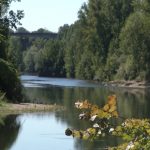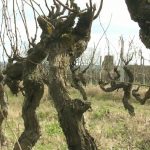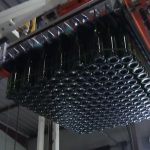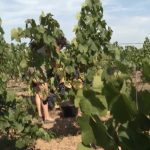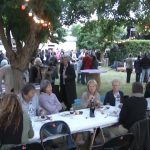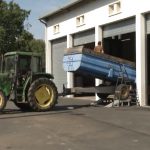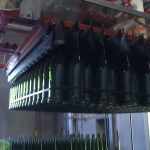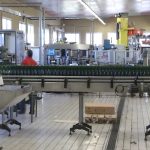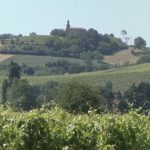THE PHENOMENON BORDEAUX, WORLD CAPITAL OF WINE
The charismatic wines of Bordeaux are unforgettable. The moment of Mother Earth making love to the Sun, somewhere near Girona along the vineyards of Pomerol, Medok and St. Emilion, delighted by the fresh air of the Atlantic, lasts forever. And we all know that French love is a colourful butterfly in the palms of dreaming lovers. If you close your palms, you will smash it, if you open them, it will escape from you. This is exactly what the wine from Bordeaux is like. Papillon or butterfly, a sip of longing, a lot of passion, like a sip of wine from the Bordeaux region.
Exactly such a longing and exactly such a passion for life is experienced in the Bordeaux region.
The French have a cult to the wine and an amazing wine culture. They drink several different wines with almost every meal. They know exactly what kind of food matches what kind of wine, what kind of glasses are used, how it is served, in which season and for which occasion which wine is consumed. It is a general commitment, but also a French paradox. They have no alcoholism, and the level of cardiovascular disease is low.
Of all the wine regions in France, Bordeaux is a legend. The region is located along the Gironda River in western France, near the Atlantic Ocean. The city of Bordeaux itself has a Renaissance architecture of the 18th century, and the region of the same name is full of old castles that have their own vineyards, wine cellars and a brand after which the wines are named.
But they also have a long tradition, as well as their own philosophy of making wine. Bordeaux breathes and lives for wine. The region is divided into 4 areas: Saint Emilion, Pomerol, Medoc and Graves and about 37 sites of which the most famous include: Pauliаc, Margaux, Fronsac, Lussac, Sauternes and others. There are about 8,500 wineries with about 60 standard control points. It is interesting that for wineries these standards in wine production are traditionally constant, so they always have the same quality, which has been preserved for centuries. The annual production of wines from this region is 700 million bottles, 89% of which are red wines.
Bordeaux wines are mainly produced as a blend or a mixture of several varieties, but each winery has its own secret formula. It is characteristic that this region is the homeland of Cabernet Savignon. Apart from it, Cabernet Frank, Merlot, Petit Verdot also come from here, and Malbec and Carmenere are less represented than the red varieties. Typical red Bordeaux blends include: 70% Cabernet Savignon, 15% Merlot, 15% Cabernet Franc and vice versa. The most common white wine varieties are Semillon, Savignon Blanc, Muscadelle. A typical white Bordeaux blend is 80% Semillon, 20% Savignon Blanc. Rosé, as a category, is less represented. In any case, these are elegant and graceful wines, soft in taste, but full of bouquets of scents, the colours are almost with neon glow, and no wine gets on the market before it reaches optimal maturity and balance.
The Bordeaux region is special because it has a style like no other wine region in the world. The place is a living history, with well-preserved Renaissance cities, restored villages, medieval castles and impeccable vineyards. It is a major tourist attraction. All programmes are wonderfully designed and placed in a wine way. Nature is completely subordinated and cultivated in the direction of vineyards with high eco-standards.
The warm air from the ocean and the continental freshness are in a great climate balance. The attraction is that the world’s jet-set have their own wineries here.
To capture the grandeur of this project called Bordeaux, we will mention the example of Chateau d’Yquem castle in the south of the region, known for its sweet wine production. It is a predicative wine made from the Semillon variety, produced by standards that require late harvest of only 850 kg per hectare.
The grapes are picked by hand, only the sufficiently overripe grains, from vines on which one or two bunches of grapes ripen. Then they are naturally dried for two weeks, infected with Bortrytis cinerea to reach a better taste.
Traditionally processed sweet-wort is highly concentrated with sugar (28% –32%), so with the help of natural yeasts it is fermented twice at controlled temperatures to maintain the colour and flavour. The wine is ripened in wooden barrels for at least 2 to 3 years and glass bottles for another 3 years in the basements of the castle. No wonder that such a 0.5 litre bottle with a castle on its label costs $80 a piece. The castle also has a wine bank where superior wines from special harvests, from exceptional seasons and of premium quality are kept and sold as shares with a high value on world stock markets.
French wines have three designations on the labels. Vine de pays, folk or regional, refers to wines for widespread use, vine de table or table wines, which are served with food, and only wines from Bordeaux have strict control. Therefore, don’t hesitate to try the wines marked Appellation controlee les grandes vine de Bordeaux.

